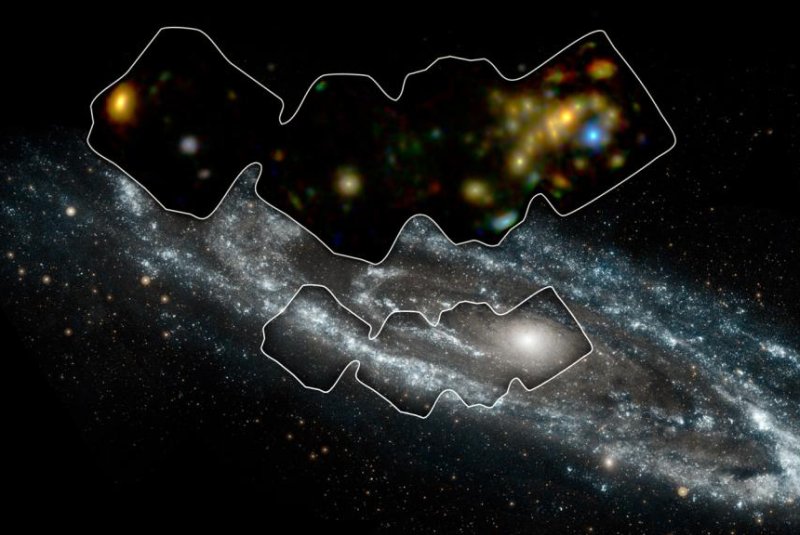NuSTAR allowed scientists to scan a swath of the Andromeda galaxy rich in X-ray binaries. Photo by NASA/NuSTAR/Goddard
GREENBELT, Md., Jan. 5 (UPI) -- Using NASA's Nuclear Spectroscopic Telescope Array, or NuSTAR, astronomers have recorded the best high-energy X-ray scan of our closest, largest galactic neighbor, Andromeda.
The scan successfully captured 40 X-ray binaries in intricate detail, which researchers say will improve models of galactic evolution.
X-ray binaries are binary star systems that produce intense X-ray emissions. The binary systems consist of an "accretor" -- typically a neutron star or black hole -- that feeds off the spillover material of a "donor," usually a normal dead or dying star. As the material is consumed and concentrated by the accretor, it gives off X-rays.
Researchers believe these systems -- and the heat and energy they transfer the surrounding intergalactic gas -- are key in the formation and early evolution galaxies.
"Andromeda is the only large spiral galaxy where we can see individual X-ray binaries and study them in detail in an environment like our own," Daniel Wik, a scientist at the NASA Goddard Space Flight Center, told attendees of the 227th meeting of American Astronomical Society held in Florida this week.
"We can then use this information to deduce what's going on in more distant galaxies, which are harder to see," Wik said.
Researchers are now using their new observations to differentiate between X-ray binaries with neutron stars and those with black holes. The ratio may have important implications for estimating the energy potential of galaxies rich in X-ray binaries.
"Observations of local populations of stellar-mass-sized black holes and neutron stars with NuSTAR allow us to figure out just how much power is coming out from these systems." explained Ann Hornschemeier, principal investigator of the NuSTAR Andromeda scan.
The research will also help scientists better understand the differences in Andromeda and Milky Way star formation.
"Studying the extreme stellar populations in Andromeda tells us about how its history of forming stars may be different than in our neighborhood," added Fiona Harrison, the principal investigator of the NuSTAR mission.















